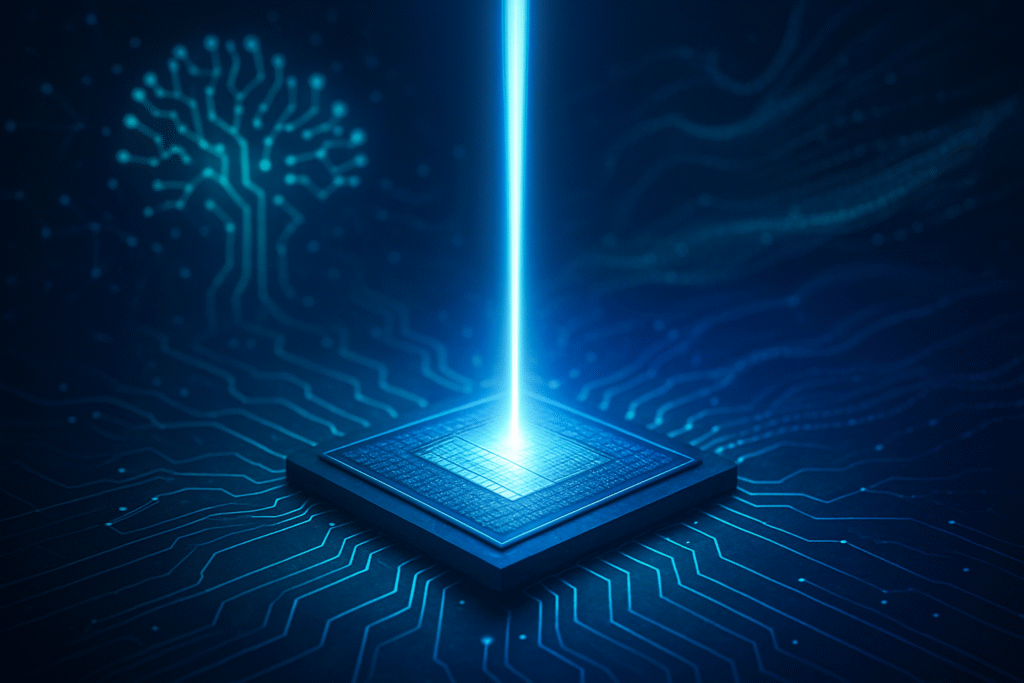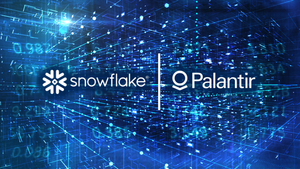
The global Extreme Ultraviolet Lithography (EUL) market is on the cusp of unprecedented expansion, projected to reach a staggering $28.66 billion by 2031, exhibiting a robust Compound Annual Growth Rate (CAGR) of 22%. This explosive growth is not merely a financial milestone; it signifies a critical inflection point for the entire technology industry, particularly for advanced chip manufacturing. EUL is the foundational technology enabling the creation of the smaller, more powerful, and energy-efficient semiconductors that are indispensable for the next generation of artificial intelligence (AI), high-performance computing (HPC), 5G, and autonomous systems.
This rapid market acceleration underscores the indispensable role of EUL in sustaining Moore's Law, pushing the boundaries of miniaturization, and providing the raw computational power required for the escalating demands of modern AI. As the world increasingly relies on sophisticated digital infrastructure and intelligent systems, the precision and capabilities offered by EUL are becoming non-negotiable, setting the stage for profound advancements across virtually every sector touched by computing.
The Dawn of Sub-Nanometer Processing: How EUV is Redefining Chip Manufacturing
Extreme Ultraviolet Lithography (EUL) represents a monumental leap in semiconductor fabrication, employing ultra-short wavelength light to etch incredibly intricate patterns onto silicon wafers. Unlike its predecessors, EUL utilizes light at a wavelength of approximately 13.5 nanometers (nm), a stark contrast to the 193 nm used in traditional Deep Ultraviolet (DUV) lithography. This significantly shorter wavelength is the key to EUL's superior resolution, enabling the production of features below 7 nm and paving the way for advanced process nodes such as 7nm, 5nm, 3nm, and even sub-2nm.
The technical prowess of EUL systems is a marvel of modern engineering. The EUV light itself is generated by a laser-produced plasma (LPP) source, where high-power CO2 lasers fire at microscopic droplets of molten tin in a vacuum, creating an intensely hot plasma that emits EUV radiation. Because EUV light is absorbed by virtually all materials, the entire process must occur in a vacuum, and the optical system relies on a complex arrangement of highly specialized, ultra-smooth reflective mirrors. These mirrors, composed of alternating layers of molybdenum and silicon, are engineered to reflect 13.5 nm light with minimal loss. Photomasks, too, are reflective, differing from the transparent masks used in DUV, and are protected by thin, high-transmission pellicles. Current EUV systems (e.g., ASML's NXE series) operate with a 0.33 Numerical Aperture (NA), but the next generation, High-NA EUV, will increase this to 0.55 NA, promising even finer resolutions of 8 nm.
This approach dramatically differs from previous methods, primarily DUV lithography. DUV systems use refractive lenses and operate in ambient air, relying heavily on complex and costly multi-patterning techniques (e.g., double or quadruple patterning) to achieve smaller feature sizes. These multi-step processes increase manufacturing complexity, defect rates, and overall costs. EUL, by contrast, enables single patterning for critical layers at advanced nodes, simplifying the manufacturing flow, reducing defectivity, and improving throughput. The initial reaction from the semiconductor industry has been one of immense investment and excitement, recognizing EUL as a "game-changer" and "essential" for sustaining Moore's Law. While the AI research community doesn't directly react to lithography as a field, they acknowledge EUL as a crucial enabling technology, providing the powerful chips necessary for their increasingly complex models. Intriguingly, AI and machine learning are now being integrated into EUV systems themselves, optimizing processes and enhancing efficiency.
Corporate Titans and the EUV Arms Race: Shifting Power Dynamics in AI
The proliferation of Extreme Ultraviolet Lithography is fundamentally reshaping the competitive landscape for AI companies, tech giants, and even startups, creating distinct advantages and potential disruptions. The ability to access and leverage EUL technology is becoming a strategic imperative, concentrating power among a select few industry leaders.
Foremost among the beneficiaries is ASML Holding N.V. (NASDAQ: ASML), the undisputed monarch of the EUL market. As the world's sole producer of EUL machines, ASML's dominant position makes it indispensable for manufacturing cutting-edge chips. Its revenue is projected to grow significantly, fueled by AI-driven semiconductor demand and increasing EUL adoption. The rollout of High-NA EUL systems further solidifies ASML's long-term growth prospects, enabling breakthroughs in sub-2 nanometer transistor technologies. Following closely are the leading foundries and integrated device manufacturers (IDMs). Taiwan Semiconductor Manufacturing Company (NYSE: TSM), the largest pure-play foundry, heavily leverages EUL to produce advanced logic and memory chips for a vast array of tech companies. Their robust investments in global manufacturing capacity, driven by strong AI and HPC requirements, position them as a massive beneficiary. Similarly, Samsung Electronics Co., Ltd. (KRX: 005930) is a major producer and supplier that utilizes EUL to enhance its chip manufacturing capabilities, producing advanced processors and memory for its diverse product portfolio. Intel Corporation (NASDAQ: INTC) is also aggressively pursuing EUL, particularly High-NA EUL, to regain its leadership in chip manufacturing and produce 1.5nm and sub-1nm chips, crucial for its competitive positioning in the AI chip market.
Chip designers like NVIDIA Corporation (NASDAQ: NVDA) and Advanced Micro Devices, Inc. (NASDAQ: AMD) are indirect but significant beneficiaries. While they don't manufacture EUL machines, their reliance on foundries like TSMC to produce their advanced AI GPUs and CPUs means that EUL-enabled fabrication directly translates to more powerful and efficient chips for their products. The demand for NVIDIA's AI accelerators, in particular, will continue to fuel the need for EUL-produced semiconductors. For tech giants operating vast cloud infrastructures and developing their own AI services, such as Alphabet Inc. (NASDAQ: GOOGL), Microsoft Corporation (NASDAQ: MSFT), and Amazon.com, Inc. (NASDAQ: AMZN), EUL-enabled chips power their data centers and AI offerings, allowing them to expand their market share as AI leaders. However, startups face considerable challenges due to the high operational costs and technical complexities of EUL, often needing to rely on tech giants for access to computing infrastructure. This dynamic could lead to increased consolidation and make it harder for smaller companies to compete on hardware innovation.
The competitive implications are profound: EUL creates a significant divide. Companies with access to the most advanced EUL technology can produce superior chips, leading to increased performance for AI models, accelerated innovation cycles, and a centralization of resources among a few key players. This could disrupt existing products and services by making older hardware less competitive for demanding AI workloads and enabling entirely new categories of AI-powered devices. Strategically, EUL offers technology leadership, performance differentiation, long-term cost efficiency through higher yields, and enhanced supply chain resilience for those who master its complexities.
Beyond the Wafer: EUV's Broad Impact on AI and the Global Tech Landscape
Extreme Ultraviolet Lithography is not merely an incremental improvement in manufacturing; it is a foundational technology that underpins the current and future trajectory of Artificial Intelligence. By sustaining and extending Moore's Law, EUVL directly enables the exponential growth in computational capabilities that is the lifeblood of modern AI. Without EUVL, the relentless demand for more powerful, energy-efficient processors by large language models, deep neural networks, and autonomous systems would face insurmountable physical barriers, stifling innovation across the AI landscape.
Its impact reverberates across numerous industries. In semiconductor manufacturing, EUVL is indispensable for producing the high-performance AI processors that drive global technological progress. Leading foundries and IDMs have fully integrated EUVL into their high-volume manufacturing lines for advanced process nodes, ensuring that companies at the forefront of AI development can produce more powerful, energy-efficient AI accelerators. For High-Performance Computing (HPC) and Data Centers, EUVL is critical for creating the advanced chips needed to power hyperscale data centers, which are the backbone of large language models and other data-intensive AI applications. Autonomous systems, such as self-driving cars and advanced robotics, directly benefit from the precision and power enabled by EUVL, allowing for faster and more efficient real-time decision-making. In consumer electronics, EUVL underpins the development of advanced AI features in smartphones, tablets, and IoT devices, enhancing user experiences. Even in medical and scientific research, EUVL-enabled chips facilitate breakthroughs in complex fields like drug discovery and climate modeling by providing unprecedented computational power.
However, this transformative technology comes with significant concerns. The cost of EUL machines is extraordinary, with a single system costing hundreds of millions of dollars, and the latest High-NA models exceeding $370 million. Operational costs, including immense energy consumption (a single tool can rival the annual energy consumption of an entire city), further concentrate advanced chip manufacturing among a very few global players. The supply chain is also incredibly fragile, largely due to ASML's near-monopoly. Specialized components often come from single-source suppliers, making the entire ecosystem vulnerable to disruptions. Furthermore, EUL has become a potent factor in geopolitics, with export controls and technology restrictions, particularly those influenced by the United States on ASML's sales to China, highlighting EUVL as a "chokepoint" in global semiconductor manufacturing. This "techno-nationalism" can lead to market fragmentation and increased production costs.
EUVL's significance in AI history can be likened to foundational breakthroughs such as the invention of the transistor or the development of the GPU. Just as these innovations enabled subsequent leaps in computing, EUVL provides the underlying hardware capability to manufacture the increasingly powerful processors required for AI. It has effectively extended the viability of Moore's Law, providing the hardware foundation necessary for the development of complex AI models. What makes this era unique is the emergent "AI supercycle," where AI and machine learning algorithms are also being integrated into EUVL systems themselves, optimizing fabrication processes and creating a powerful, self-improving technological feedback loop.
The Road Ahead: Navigating the Future of Extreme Ultraviolet Lithography
The future of Extreme Ultraviolet Lithography promises a relentless pursuit of miniaturization and efficiency, driven by the insatiable demands of AI and advanced computing. The coming years will witness several pivotal developments, pushing the boundaries of what's possible in chip manufacturing.
In the near-term (present to 2028), the most significant advancement is the full introduction and deployment of High-NA EUV lithography. ASML (NASDAQ: ASML) has already shipped the first 0.55 NA scanner to Intel (NASDAQ: INTC), with high-volume manufacturing platforms expected to be operational by 2025. This leap in numerical aperture will enable even finer resolution patterns, crucial for sub-2nm nodes. Concurrently, there will be continued efforts to increase EUV light source power, enhancing wafer throughput, and to develop advanced photoresist materials and improved photomasks for higher precision and defect-free production. Looking further ahead (beyond 2028), research is already exploring Hyper-NA EUV with NAs of 0.75 or higher, and even shorter wavelengths, potentially below 5nm, to extend Moore's Law beyond 2030. Concepts like coherent light sources and Directed Self-Assembly (DSA) lithography are also on the horizon to further refine performance. Crucially, the integration of AI and machine learning into the entire EUV manufacturing process is expected to revolutionize optimization, predictive maintenance, and real-time adjustments.
These advancements will unlock a new generation of applications and use cases. EUL will continue to drive the development of faster, more efficient, and powerful processors for Artificial Intelligence systems, including large language models and edge AI. It is essential for 5G and beyond telecommunications infrastructure, High-Performance Computing (HPC), and increasingly sophisticated autonomous systems. Furthermore, EUVL will play a vital role in advanced packaging technologies and 3D integration, allowing for greater levels of integration and miniaturization in chips. Despite the immense potential, significant challenges remain. High-NA EUV introduces complexities such as thinner photoresists leading to stochastic effects, reduced depth of focus, and enhanced mask 3D effects. Defectivity remains a persistent hurdle, requiring breakthroughs to achieve incredibly low defect rates for high-volume manufacturing. The cost of these machines and their immense operational energy consumption continue to be substantial barriers.
Experts are unanimous in predicting substantial market growth for EUVL, reinforcing its role in extending Moore's Law and enabling chips at sub-2nm nodes. They foresee the continued dominance of foundries, driven by their focus on advanced-node manufacturing. Strategic investments from major players like TSMC (NYSE: TSM), Samsung (KRX: 005930), and Intel (NASDAQ: INTC), coupled with governmental support through initiatives like the U.S. CHIPS and Science Act, will accelerate EUV adoption. While EUV and High-NA EUV will drive advanced-node manufacturing, the industry will also need to watch for potential supply chain bottlenecks and the long-term viability of alternative lithography approaches being explored by various nations.
EUV: A Cornerstone of the AI Revolution
Extreme Ultraviolet Lithography stands as a testament to human ingenuity, a complex technological marvel that has become the indispensable backbone of the modern digital age. Its projected growth to $28.66 billion by 2031 with a 22% CAGR is not merely a market forecast; it is a clear indicator of its critical role in powering the ongoing AI revolution and shaping the future of technology. By enabling the production of smaller, more powerful, and energy-efficient chips, EUVL is directly responsible for the exponential leaps in computational capabilities that define today's advanced AI systems.
The significance of EUL in AI history cannot be overstated. It has effectively "saved Moore's Law," providing the hardware foundation necessary for the development of complex AI models, from large language models to autonomous systems. Beyond its enabling role, EUVL systems are increasingly integrating AI themselves, creating a powerful feedback loop where advancements in AI drive the demand for sophisticated semiconductors, and these semiconductors, in turn, unlock new possibilities for AI. This symbiotic relationship ensures a continuous cycle of innovation, making EUVL a cornerstone of the AI era.
Looking ahead, the long-term impact of EUVL will be profound and pervasive, driving sustained miniaturization, performance enhancement, and technological innovation across virtually every sector. It will facilitate the transition to even smaller process nodes, essential for next-generation consumer electronics, cloud computing, 5G, and emerging fields like quantum computing. However, the concentration of this critical technology in the hands of a single dominant supplier, ASML (NASDAQ: ASML), presents ongoing geopolitical and strategic challenges that will continue to shape global supply chains and international relations.
In the coming weeks and months, industry observers should closely watch the full deployment and yield rates of High-NA EUV lithography systems by leading foundries, as these will be crucial indicators of their impact on future chip performance. Continued advancements in EUV components, particularly light sources and photoresist materials, will be vital for further enhancements. The increasing integration of AI and machine learning across the EUVL ecosystem, aimed at optimizing efficiency and precision, will also be a key trend. Finally, geopolitical developments, export controls, and government incentives will continue to influence regional fab expansions and the global competitive landscape, all of which will determine the pace and direction of the AI revolution powered by Extreme Ultraviolet Lithography.
This content is intended for informational purposes only and represents analysis of current AI developments.
TokenRing AI delivers enterprise-grade solutions for multi-agent AI workflow orchestration, AI-powered development tools, and seamless remote collaboration platforms.
For more information, visit https://www.tokenring.ai/.


















